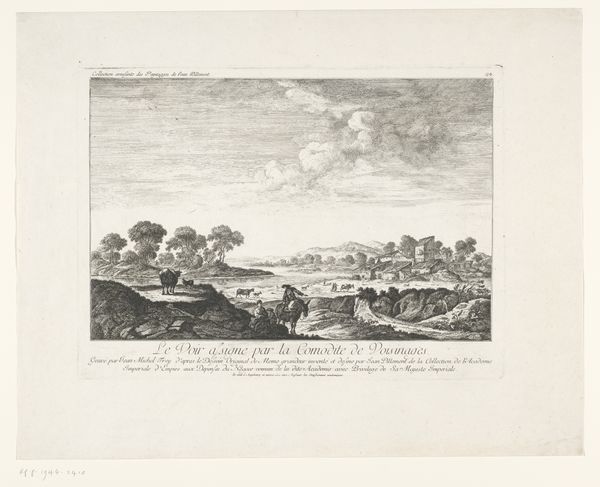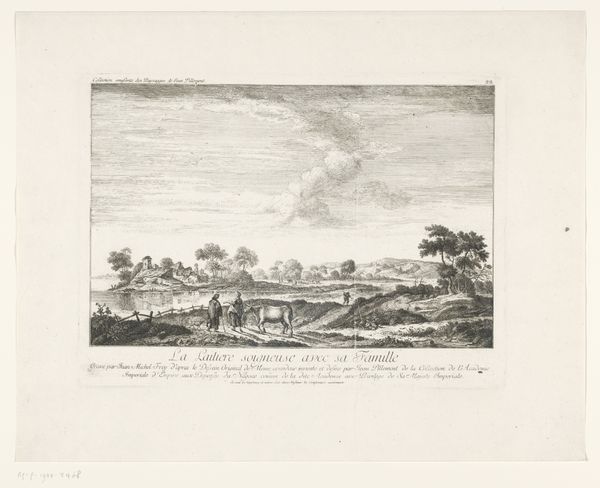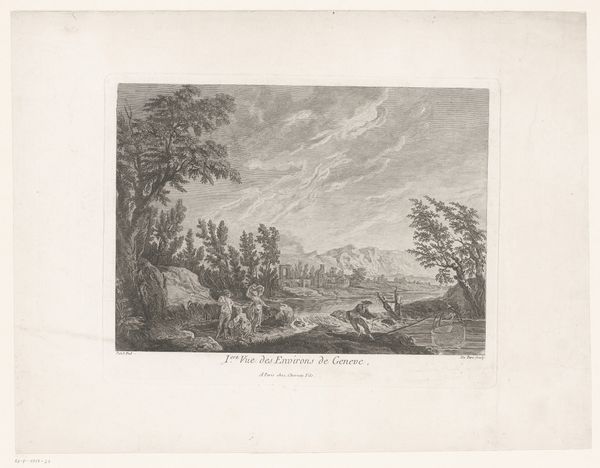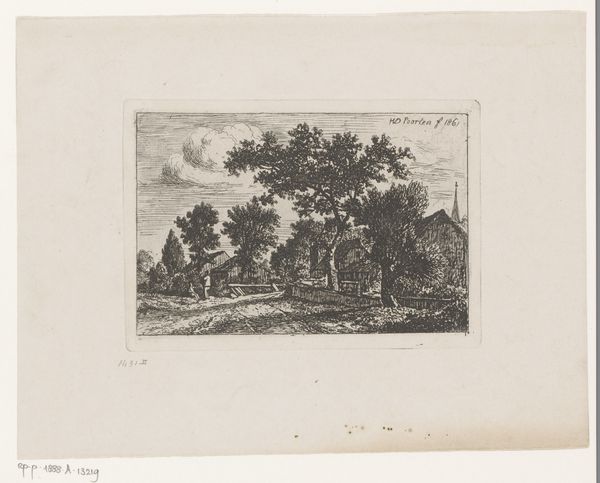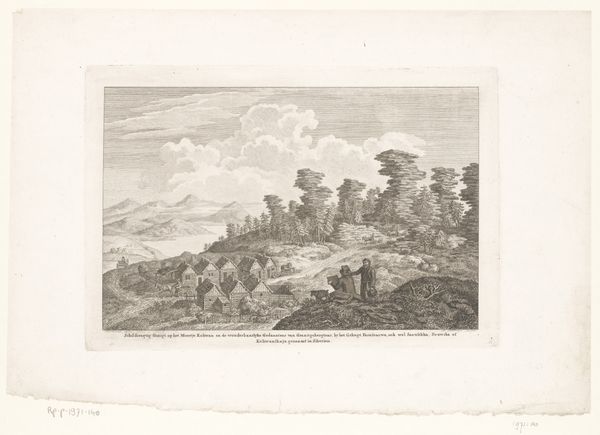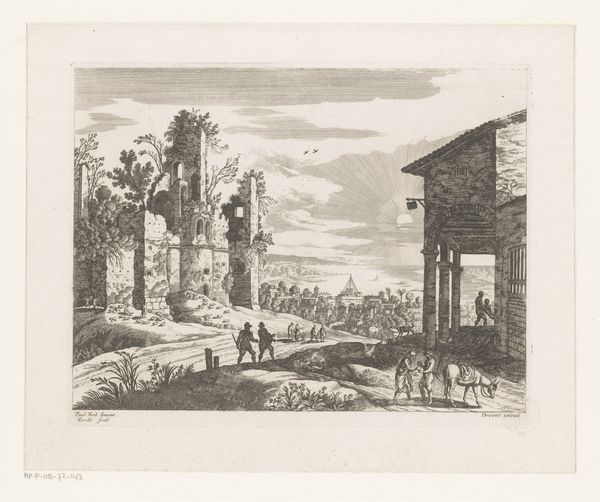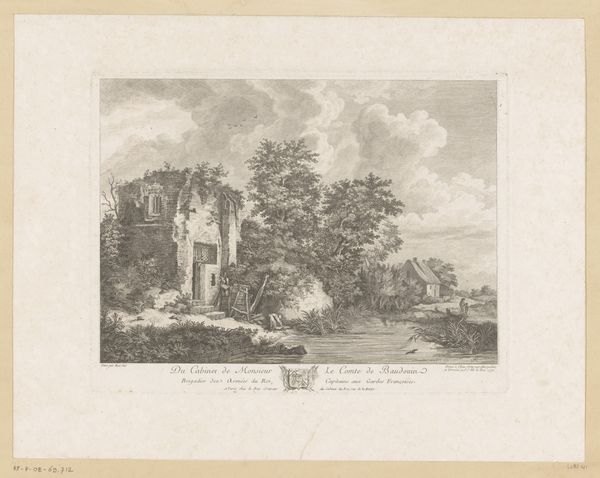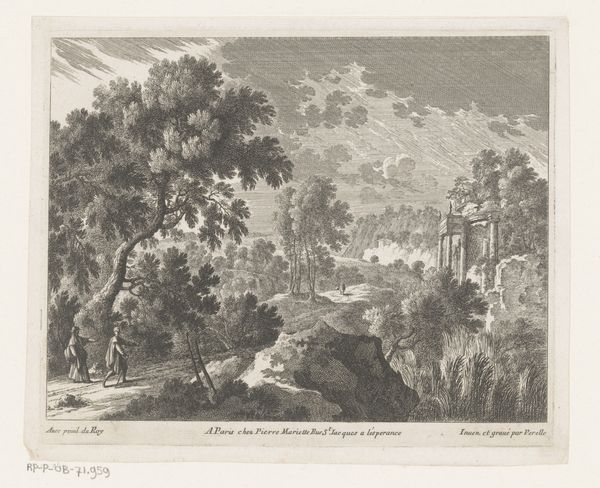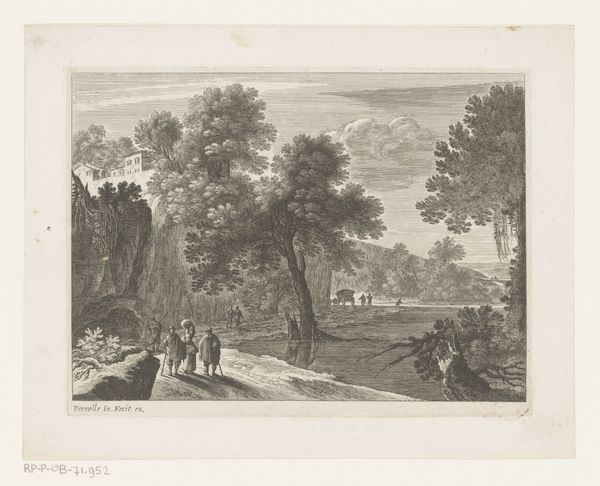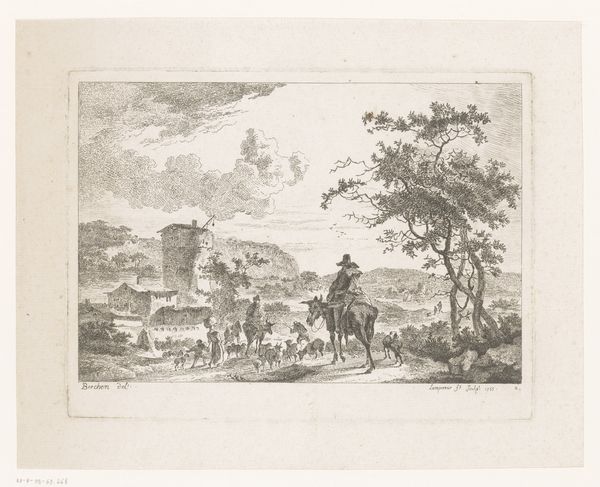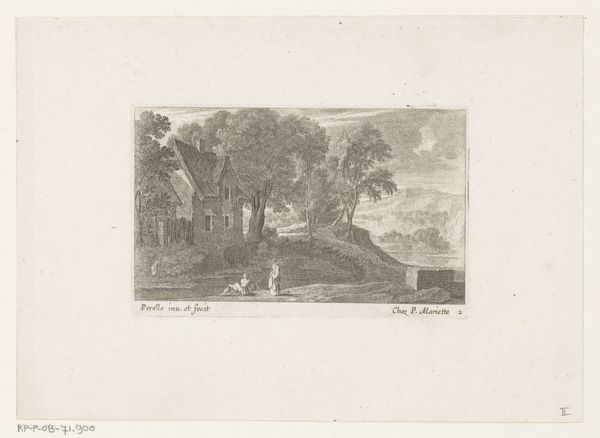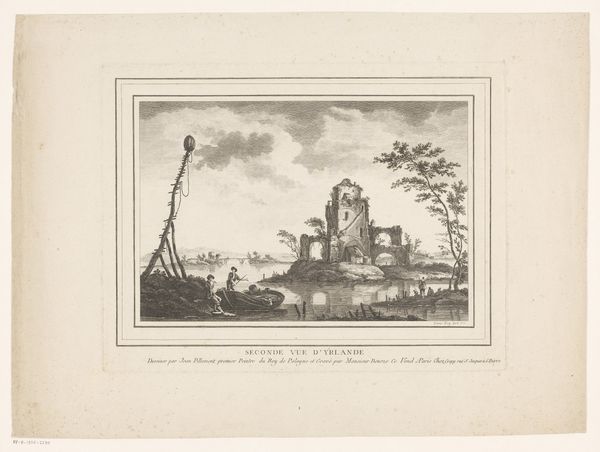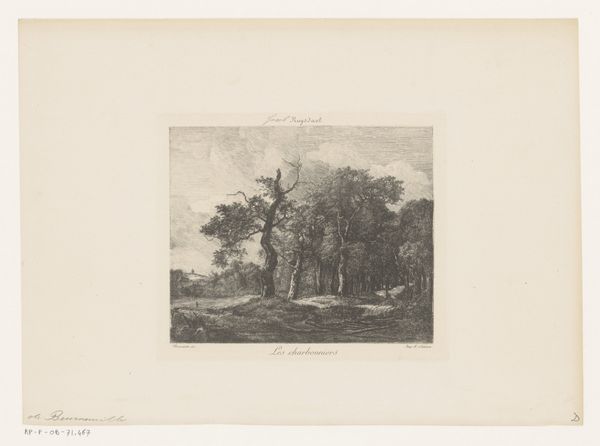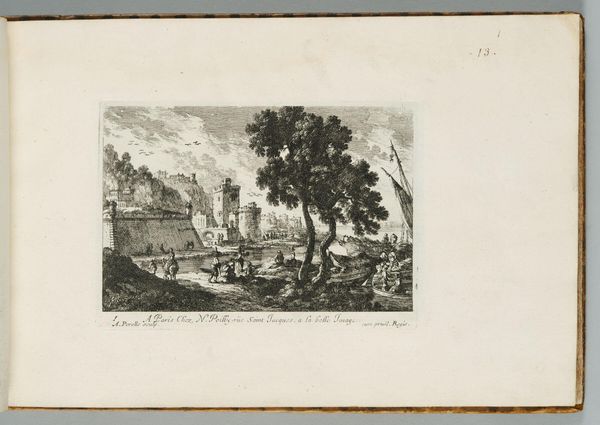
Dimensions: height 310 mm, width 414 mm
Copyright: Rijks Museum: Open Domain
Editor: This is *Rivierlandschap*, or "River Landscape," by Johann Michael Frey, dating roughly from 1760 to 1818. It's an etching, an engraving...a print. The figures look so small, and the architecture almost monumental in the distance. How do you interpret this work? Curator: Considering its historical context, prints like this served a vital role. Before photography, they democratized access to art and knowledge, circulating landscapes and historical scenes. Think of it as early mass media, shaping public perceptions. This particular landscape, while seemingly pastoral, likely carried specific social and political connotations. Who do you think might have bought and displayed prints like these? Editor: Wealthy merchants, maybe? Educated people wanting to seem worldly? Curator: Precisely. Owning and displaying such a print signaled a certain level of sophistication and awareness of the world beyond their immediate surroundings. The landscape isn't just a pretty scene; it's a marker of social standing, almost a form of cultural capital. Do you notice the small figures? How do you think they impact the overall impression? Editor: Well, they're tiny, so the landscape seems much grander. It almost feels like a stage for them, or maybe they are even dwarfed by history, about to be engulfed? Curator: That's a compelling idea! And note the presence of classical architecture incorporated into the landscape. By associating itself with classical antiquity, this landscape links the owner to a cultural lineage of prestige, effectively legitimizing their own status within a particular socio-political context. What about the composition – do you notice how your eye is led? Editor: It moves toward the vanishing point of the composition – leading me to the river in the distance. Curator: It all serves a function! Consider, too, the institutional context: "by Privilege of his Imperial Majesty," the text below the work tells us. Frey did not produce this image in a vacuum; he was authorized to do so. Editor: So, it’s not *just* a nice picture; it tells us about class, power, and how art was used to project status? Curator: Exactly. These prints offered people not just aesthetic pleasure but a means to participate in larger social and political dialogues. I notice that historical background I needed to consider. Thanks!
Comments
No comments
Be the first to comment and join the conversation on the ultimate creative platform.
